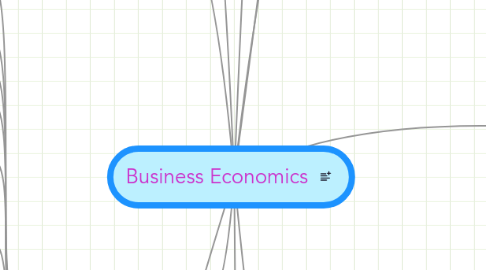Business Economics
by james campbell


1. Costs and revenues
1.1. Fixed costs: A fixed cost is one that does not change with output e.g. rent, taxes, loan payments
1.2. Variable costs: variable costs are ones that change with output e.g. component parts, workers
1.2.1. New node
1.3. Total costs = FC plus VC
1.4. Average cost = TC / Quantity
1.5. The short run: Is that period of time where at least one factor of production is fixed, usually capital.
1.6. The law of diminishing returns: states that as more of a variable factor is added to a fixed factor marginal product will initially rise owing to specialisation but marginal product will fall as diminishing returns set it.
1.7. Marginal product: is the addition to total product from the production of one extra unit of output.
1.8. Increased productivity, decreases cost per unit.
1.9. AC= AFC plus AVC
1.10. Average product is output per worker
1.11. Economies of scale: exist where an increase in all factors of production lead to a more than proportionate increase in output. There are technical and financial economies of scale.
1.12. Minimum efficient scale: is the point where the lowest average cost is first reached on the LRAC curve. It is the point where all economies of scale are exhausted.
1.13. TR = P times Q
1.13.1. AR = TR/Q
1.13.1.1. P= AR
